Dell-VMware’s New AMD EPYC-Based VxRail: 5 Things To Know
‘Being able to provide the AMD EPYC processors for the E-Series in a very small footprint with some of the performance capabilities from AMD … allows you to have [VxRail] at the edge in a small form factor but use it for things like database, VDI and unstructured data workloads,’ says Dell Technologies’ Shannon Champion.
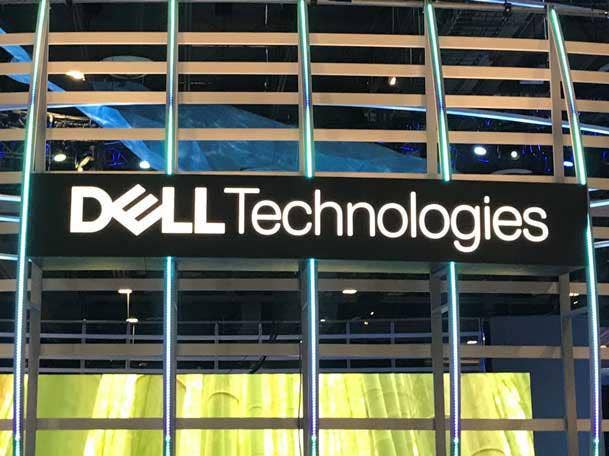
The New Dell And VMware VxRail’s
The world’s market-leading hyperconverged system, VxRail, is receiving a major shot in the arm with the launch of the new VxRail E-Series that for the first time ever will contain AMD EPYC processors.
“I’ve had customers asking for an AMD [VxRail] flavor for about two years,” said Josh Lee, director of sales at VirtuIT Systems, a Nanuet, N.Y.-based Dell and VMware partner. “So I’m really excited about this because of the ability to get the high core counts into a small footprint and bringing cost for performance down for a lot of our SMB customers.”
The new co-engineered Dell and VMware hyperconverged infrastructure VxRail E-Series looks to expand Dell Technologies’ HCI market presence even further.
The Round Rock, Texas-based company is the leader in hyperconverged systems, owning 33.6 percent share of the global market with $666 million in HCI sales in the first quarter of 2020. VMware is the leader in terms of hyperconverged software, capturing 42.4 percent global market share thanks to $841 million in HCI software sales during the first quarter. As the only jointly engineered HCI system with VMware, VxRail delivers a hybrid cloud approach that makes it simple to deploy and manage data and applications regardless of where it resides.
Here are five key things to know about Dell and VMware’s new VxRail E-Series with AMD EPYC processors.
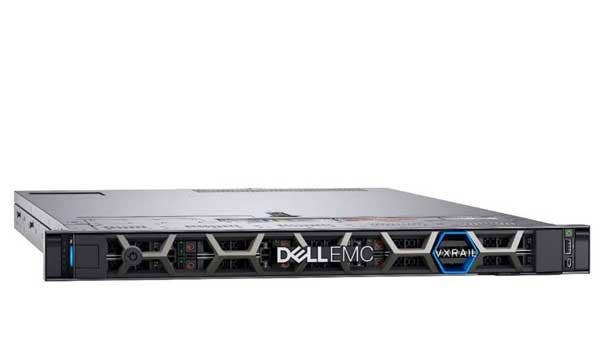
The New VxRail E Series
For the first time ever on VxRail, 2nd generation AMD EPYC processors are now available on the new E-Series. The new VxRail series has up to 64 high performance cores and support for PCIe 4 that can be deployed both inside data centers or at the edge. The 1U systems are coupled with a high-efficiency power supply that is ideal for customers that need high-performance computing power in a single socket platform for space constrained data centers and edge environments.
Dell’s new VxRail E665 system is available in NVMe, all-flash or hybrid storage configurations. The VxRail E665 is tailor-made for database, unstructured data, virtual desktop infrastructure (VDI) and high-performance computing (HPC) workloads.
“Customers are looking for ways to do more with less and part of the way to do that is to cut down on their VMware licensing costs or their server licensing costs, and being able to get denser processors into these systems that keep the same performance is a great way to do that and a great way for us as a partner to add-value to a customer,” said VirtuIT’s Lee.
The VxRail E-Series with 2nd generation AMD EPYC processors are now generally available on a globe basis, effective June 23.
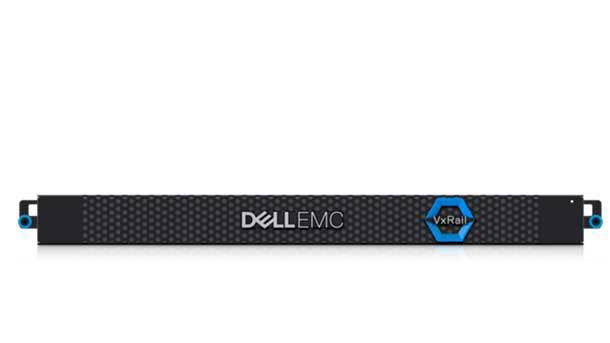
VxRail Not Leaving Intel, But Dell Wants To Give Customers ‘Choice’
Dell and VMware’s VxRail systems have traditionally leverage Intel processors for its VxRail systems.
Shannon Champion, director of HCI and CI product marketing at Dell Technologies, said the new addition of AMD EPYC processors to VxRail isn’t a move against Intel processors, but a strategy around offering customers more choices.
“From an AMD perspective on E-Series, it’s really about additional choice and flexibility. From a channel partner perceptive, customers are starting to make their mind up in terms of leaning toward one direction or another. We’ve been and continue to be really in lock-step with Intel,” she said. “Being able to provide the AMD EPYC processors for the E-Series in a very small footprint with some of the performance capabilities from AMD -- and the ability to offer a wide range of those storage configurations like NVMe, all-flash or hybrid – allows you to have it at the edge in a small form factor but use it for things like database, VDI and unstructured data workloads.”
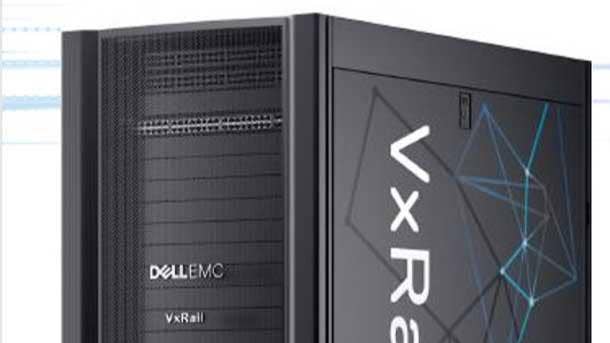
Dell-VMware’s New Ruggedize VxRail Has Intel Processors
In addition to the new VxRail E-Series, Dell Technologies unveiled today its new VxRail D Series – the company’s first-ever ruggedized hyperconverged product. The VxRail D-Series is Dell and VMware’s smallest and lightest hyperconverged system at only 20 inches deep and features 2nd generation Intel Xeon Scalable processors.
The compact and durable D-Series can withstand extreme temperatures, sustain 40G of operational shock and operate at up to 15,000 feet. One major goal with the VxRail D Series is to bring support to edge locations where resilient infrastructure is critical, for example, onboard ships at sea or equipped in aircrafts. Dell says the VxRail D Series is an ideal solution for industries such as manufacturing, industrial and oil and gas environments where conditions can create a technical challenge or space is limited.
“We designed it with ‘extreme’ in mind at a small price point with all these ruggedized capabilities that still benefits from the same VxRail HCI System Software,” said Dell’s Champion.
The VxRail D-Series has a starting price point of approximately $20,000 per 3-node cluster with one-year of ProSupport.
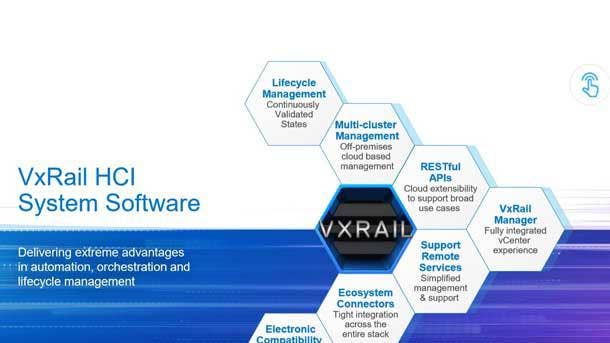
Revamped VxRail HCI System Software
Dell and VMware’s new VxRail systems have the latest VxRail HCI System Software which streamlines updates with the ability to run pre-upgrade health checks on demand along with cloud-based management and orchestration. The newest VxRail HCI software enables every VxRail cluster to be maintained throughout its lifecycle regardless of the location.
The updates to VxRail 4.7 software release adds two new features, said Dell’s Champion.
“One is the ability to do an upgrade pre-check at any point in time -- so on-demand -- as oppose to when the upgrade kicks off. So customers can preschedule those, run those on a regular basis and streamline the amount of time their upgrades take,” she said. “So not only can customers now streamline their upgrade time-frame and meeting their upgrade service window, but they know they’re always ready to react to an unpredicted upgrade that they might need for patching or security releases.”
The second feature is being able to facilitate an easy and faster way for customers to get their entire VxRail infrastructure at the same code level. “They can get all of their clusters across their infrastructure on a common release level much simpler because we are allowing them to down-rev from newer versions from the factory and also up-rev those that are on a lower version,” said Champion.
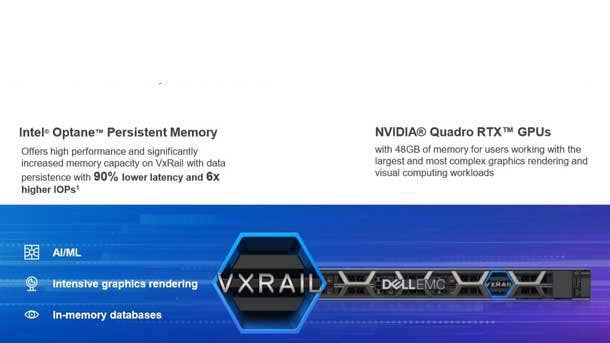
Support For Intel Optane And Nvidia Quadro RTX GPUs
With the launch of new platforms, VxRail can now support even more power-demanding applications, such as in-memory databases like SAP HANA and artificial intelligence and machine learning applications.
The new VxRail now supports Intel Optane Persistent Memory which maintains data integrity even when power is lost. Intel Optane persistent memory delivers a combination of large capacity and support for data persistence. It helps businesses fuel innovation with increased capacity and memory modes, maximizing VM densities, and enhanced memory security with automatic hardware-level encryption. The addition makes it the first fully integrated VMware HCI system to support the full range of Intel Optane technologies for the data center including Persistent Memory, Intel Xeon processors and Intel Optain SSDs.
Additionally, the new VxRail supports Nvidia Quadro RTX GPUs, which combined with Nvidia’s virtual GPU software, enables accelerated rendering, advanced graphics, compute and artificial intelligence to the data center for a wide variety of workloads. With Quadro RTX and NVIDIA vGPU software, customers can deploy VxRail to increase productivity and data centers efficiency.